What Is Token Factory Iframe?


Token Factory Iframe is a Microsoft outlook framework that Mac users utilize on their Safari browsers. Token Factory Iframe is a Microsoft outlook framework that Mac users utilize on their Safari browsers. The prefix “token” is used to denote an item of data, often one that is replaced with a placeholder or a substitute. The word “token” can also be used to refer to the data itself. Token Factory Iframe is meant for use in tokenization, which is the process of breaking up fields on a form into tokens and replacing them with placeholders. This allows you to more easily manipulate and make changes to the form fields without having any changes made directly in code. The tokenization is all done in code, which is then published as part of the application. This framework allows for easy and flexible forms programming, especially when it comes to building and testing forms. Token Factory Iframe was released in 2005 and has since been used by over one million websites. This project has been widely used because it is a free Microsoft Outlook development framework designed for corporate use. Token Factory Iframe will create a tokenized form with an option of making hidden tokens that are filled out by web server processes. This framework also includes a built in validator for displaying errors for web forms.
If searches from a browser’s address bar are being redirected through Token Factory Iframe, then you most likely have an unwanted browser extension or a malicious program installed. First thing to do is to check whether the browser uses Token Factory Iframe as the default search engine, if it does – we have a problem. A browser that has an unwanted search engine set as its default is opened to malicious content and such redirects are a common problem with most search hijackers that use Token Factory Iframe or similar domains. If this problem is indeed caused by malicious software, we recommend that you remove it as soon as possible for multiple reasons. First of all, you might not be aware of it but in case malware hijacks your search engine to redirect traffic to Token Factory Iframe or similar domains, then your search queries will be sent to third parties. You will lose your data privacy and you might even be exposed to identity theft and money related frauds – or something even worse than this.
How to fix Token Factory Iframe?
- Click “Safari” at the top of your screen
- open Preferences.
- At the top menu, click on “Websites”.
- Then, on the vertical lefthand menu, click on “Downloads”.
- scroll down until you find Outlook.
- Click the dropdown menu next to Outlook and select “Deny”.
- This will stop Outlook from downloading token factory iframe.
- After that, make sure it is NOT listed in the “Extensions” section of the Preferences menu. If it is, Just remove it.


The first thing you need to do is to make sure Safari is not running. If you have troubles closing it, you may need to Force Quit Safari - (Start Activity Monitor by opening up Finder, then proceed to Application --> Utilities --> Activity monitor. Locate the Safari process and force quit it.
Safely launch Safari again by holding the Shift key and clicking on the Safari application icon - This will prevent Safari’s previously opened malicious web pages.
In case that you still are having trouble with scripts interrupting the closing of unwanted pages, please do the following:
- Force Quit Safari again.
- Disconnect form Internet and try again.
Then Re-Launch Safari but don’t forget to press and hold the Shift button to prevent pop-ups. Then, click on Preferences.


- Carefully take a look at your default home page and change it if the hijacker altered it.
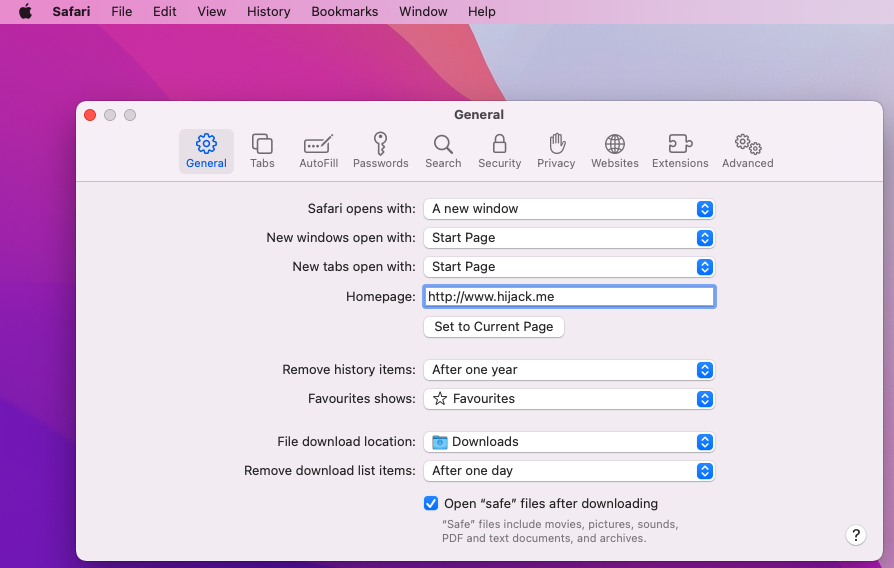

- Then go to the Extensions tab and make sure there are no unknow extensions installed.
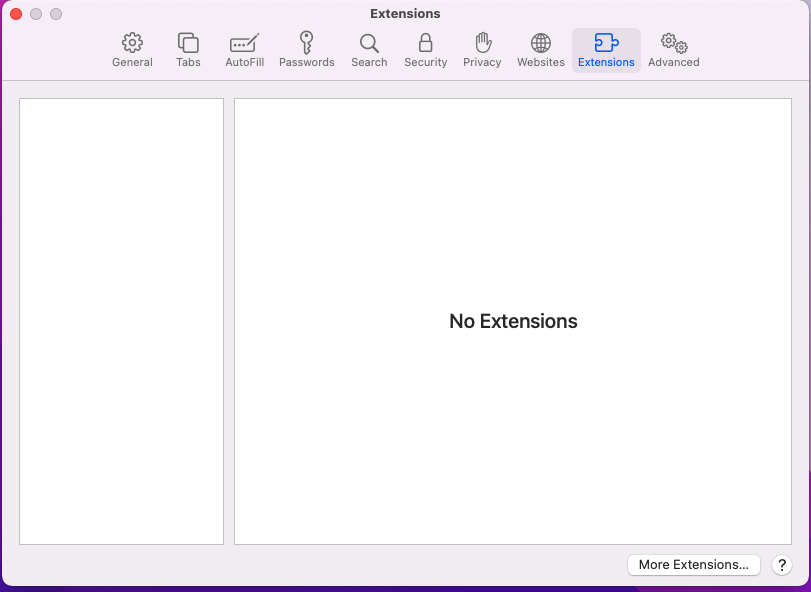

- Next step is to click on Privacy tab
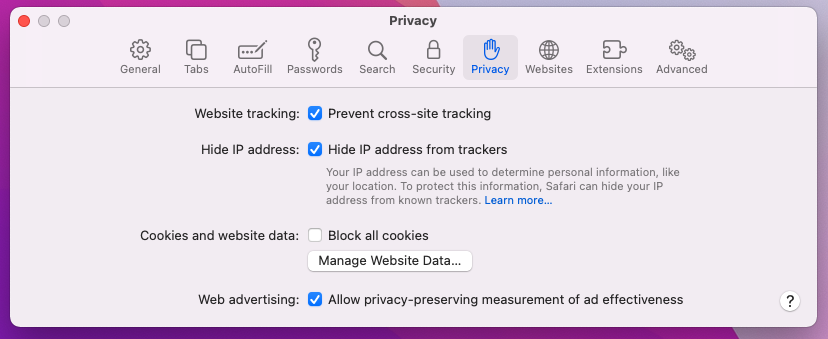

- Manage website data


- Here you can remove any unwanted website data or just remove them all. Please, keep in mind that after you do this all stored website data will be deleted. You will need to sign-in again for all websites that require any form of authentication.
- The next step is to Clear History (if you want), select the tab.
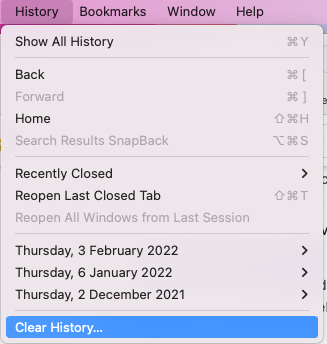

- Click the menu next to clear and choose a time period — if you want to completely reset Safari, choose all history.
- Press Clear History
- To remove from Chrome, open the browser and click the icon with the three dots located in the top-right.
- Select to More Tools --> Extensions and review what Chrome Extensions are present in the browser


- Remove the ones that you do not recognize.
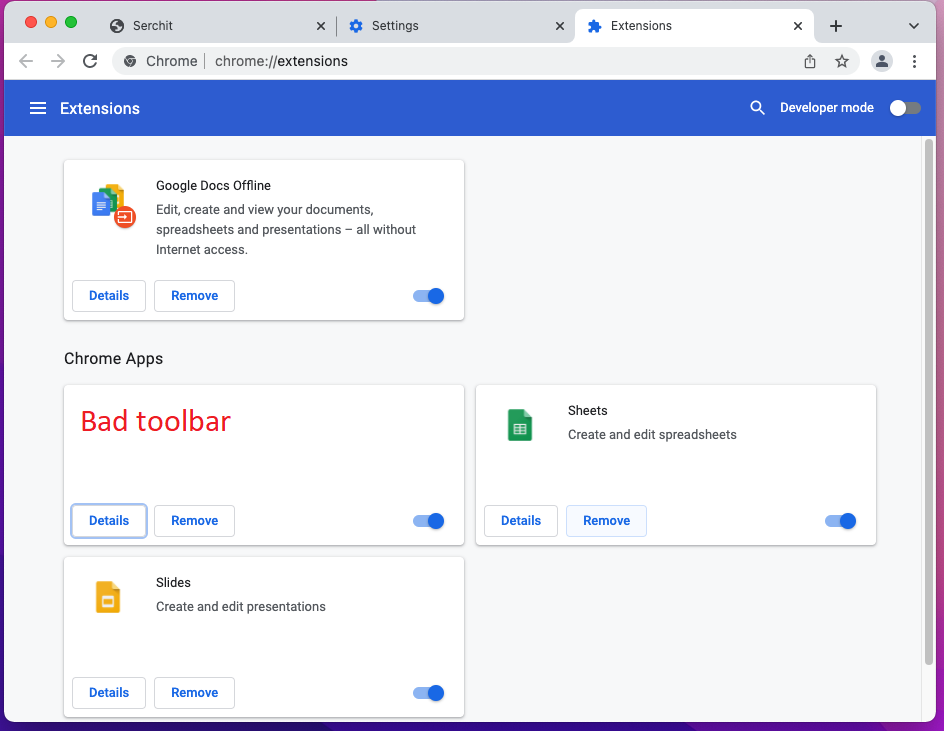

- If the parasite continues to disrupt your browsing with Chrome, this is what else you can do:
- Click again the menu of Google Chrome, and open Settings.
- Select the Search Engine from the left panel, review the available search engines and change the default to your preference.


- Then, click on Manage Search Engines, review the list of search engine availabilities and if any of the listed items looks suspicious, click the three-dots next to them, and delete.


- Click on Privacy and Security in the left panel, select the Clear browsing data option, check every box except the Passwords one, and click Clear Data.


- Next step is to clear Notifications, select the Site settings option in the Privacy and Security section, then locate Notifications.


- Review the listed websites in the Allow to send notifications section and if any of the entries shown there seem dubious or related to the browser hijacker, select the three dots next to the object and click on Remove.
- Start Mozilla Firefox
- On the top right click the three dashes
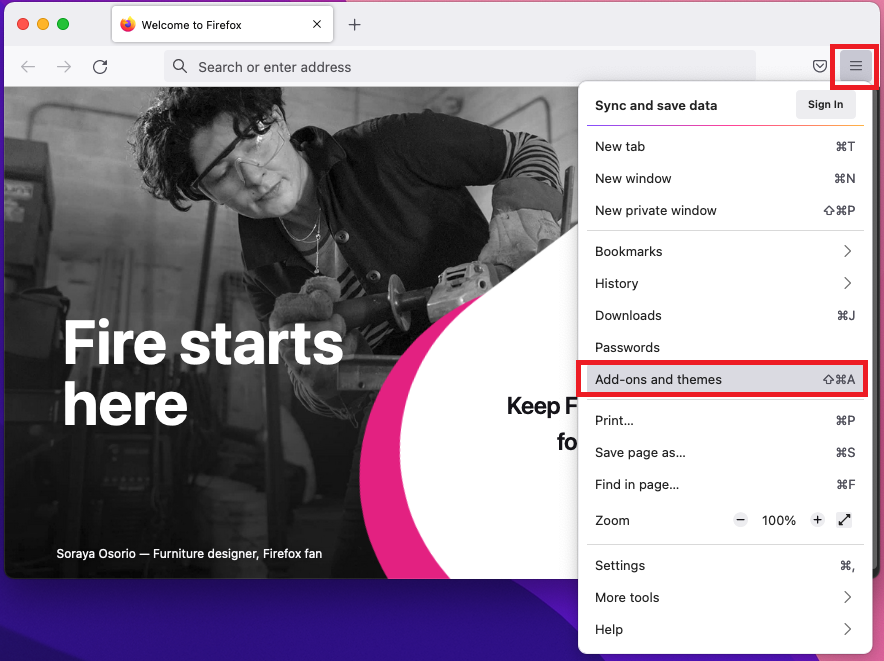

- go to add-ons and themes
- The add-ons manager will open
- Carefully review review four Firefox Extensions
- If any unwanted extension is present, click on the three horizontal dots and then Remove
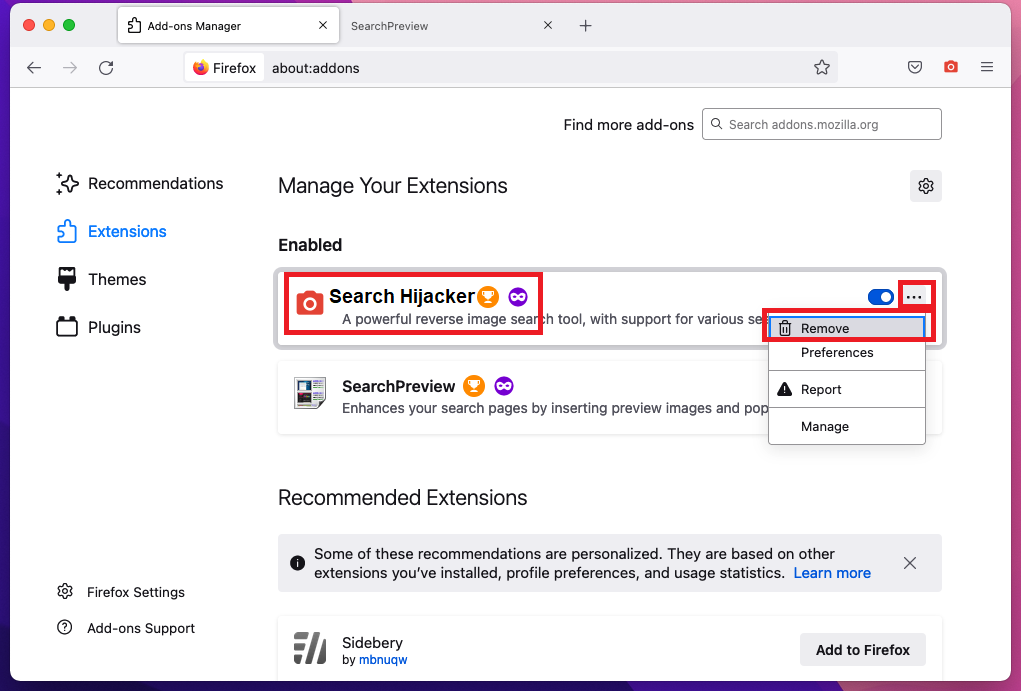

- After the extension is removed, restart Mozilla Firefox by closing it from the red dot in the top left and start it again.
Step 3: Scan for and remove Token Factory Iframe files from your Mac
Fix your browser settings with SpyHunter Anti-Malware
Once you download and install SpyHunter for Mac run a scan.
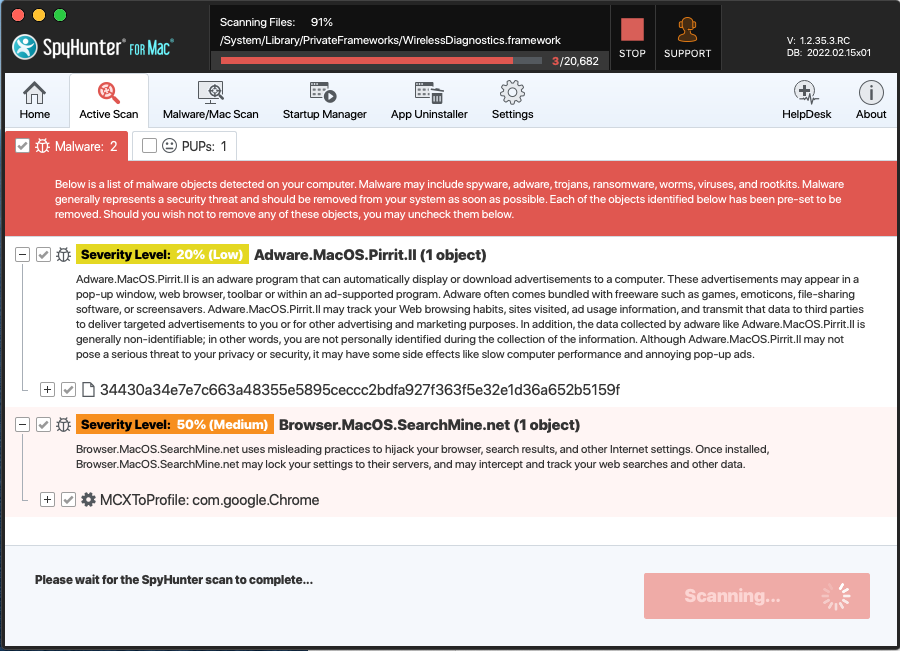

Once the scan is complete, your mac will be virus free.
Token Factory Iframe malware Frequently Asked Questions:
- How do I get rid of Token Factory Iframe?
Token Factory Iframe might be a Browser hijacker – malicious software that can be installed by third-party applications or websites. They usually change the settings of web browsers and search engines to display certain ads, pop-ups, banners, etc.
- What are the symptoms of Token Factory Iframe infection in your Mac?
Token Factory Iframe becomes your web browser’s built-in search engine.
Your browser’ s search queries are redirected through Token Factory Iframe.com
The “Token Factory Iframe” browser extension or some shady software is installed on your Mac.
- How do I remove Token Factory Iframe from my browser?
click the gear icon on the top left and select Manage add-ons. Under Add-on Types, select Search Providers. Select your search engine from the list of providers and click Remove to remove it. In Google Chrome, go to Settings (at the top right) and choose Search in the On Startup drop down menu.
- How do I uninstall Token Factory Iframe?
How to Make Your Mac Run Faster?
You might be wondering how to make your Mac run faster? It is a common misconception that the more processing power you have, the faster your computer will run. In reality, it’s actually about what’s going on in your processor and memory. For the average person using a computer for just general applications like word processing and web browsing, you don’t need much in the way of computing power.
– Use an SSD drive instead of a hard disk drive.
– Double your RAM if possible.
– Disable System Integrity Protection (SIP). (Attention! – do this only if you know the consequences.)
References:
- More about pop-up advertisements on Wikipedia.
- MacOS malware
- SpyHunter Anti-Malware overview and also the reasons why we recommend it for malware elimination.
Please, have in mind that SpyHunter offers a free 15-day Trial version with full functionality. Credit card is required, no charge upfront.

